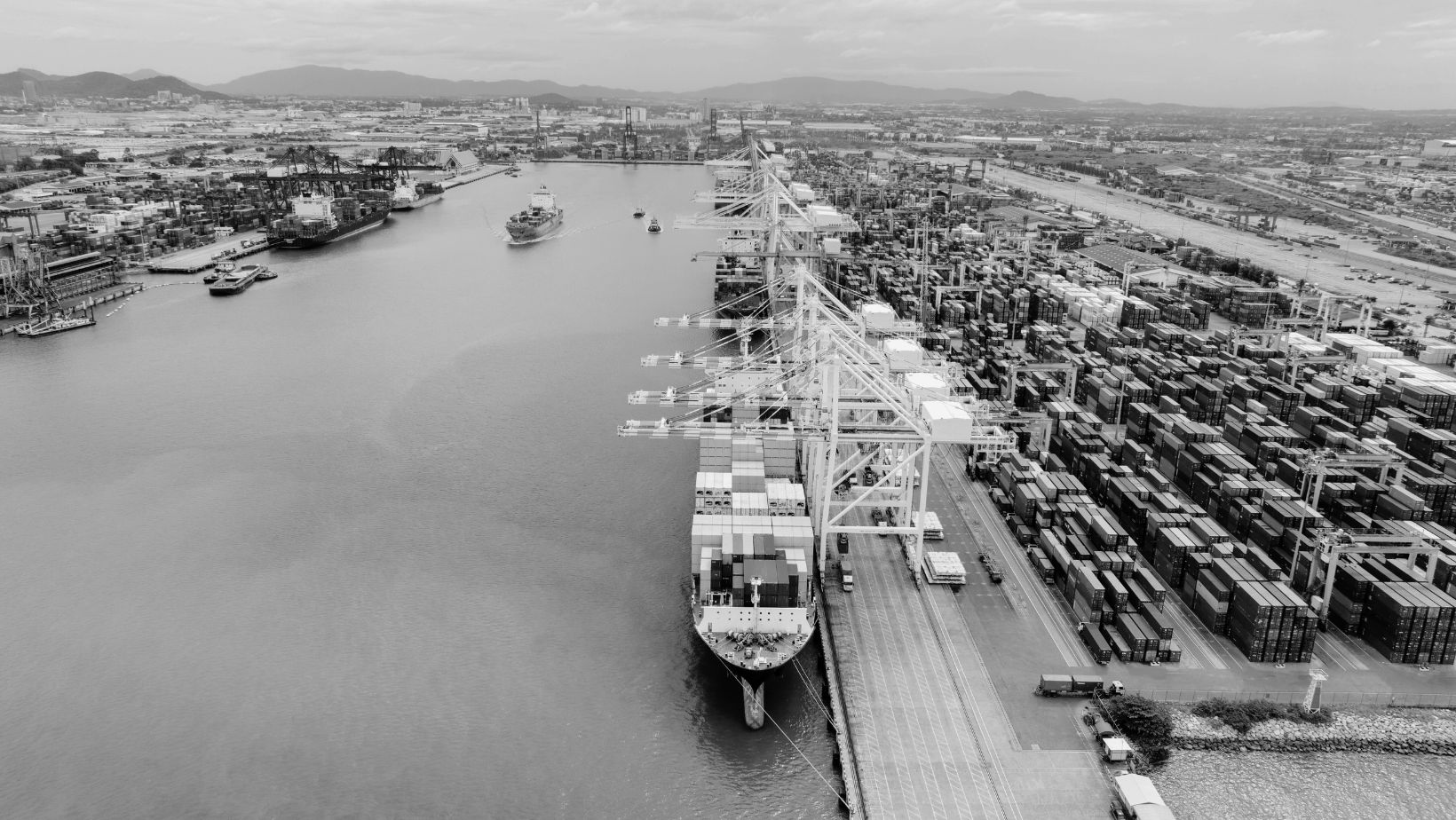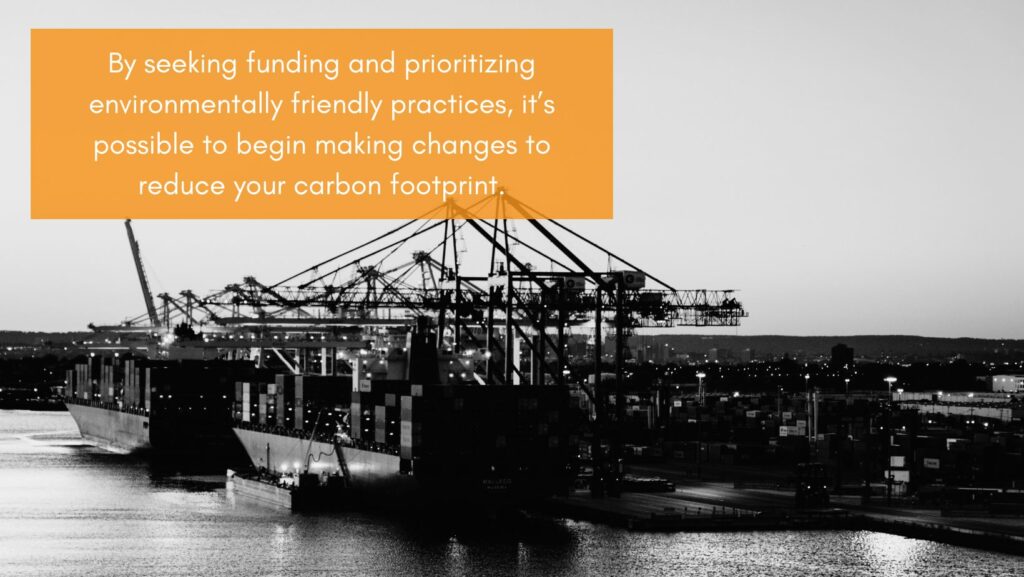
A Texas A&M study from 2022 found that the overall carbon footprint of barge shipping is only one-ninth as large as trucking’s and about half that of rail. But despite barge transportation being the least worrisome when it comes to fuel cost and emissions, it is still a significant contributor of greenhouse gasses. Relying heavily on diesel to power boats has long been a source of air and water pollution, not to mention a safety risk for barge workers and communities who live near ports.
Making environmental changes to inland water transportation practices is no longer a choice, but a necessity for the barge industry. At this year’s Inland Maritime Expo, several key discussions will cover topics for improving barge operation sustainability, including:
- The Efficiency and Accessibility of Electric Machines for Ports and Terminals
- Decarbonizing Marine Operations (by using alternative fuels)
- Inhalation Hazards in the Marine Industry and How to Keep Workers and the Community Safe
Obviously, sustainability is a hot topic, and that won’t change any time soon. By embracing new technology, adopting responsible practices, and collaborating with financial supporters, barge transportation companies can minimize their environmental impact while maintaining their vital role in global commerce.
Changes on the Horizon
Innovative solutions to enhance sustainability are all around us. Some options and practices are already possible and being put into place. Some are still in the early days of research, or only available outside the U.S., but offer promising changes for reducing carbon emissions. By becoming educated on the latest technological advancements, alternative fuels, and propulsion systems, barge companies can contribute to a better environment in the near future.
Using Alternative Fuel Sources
With hopes of cutting greenhouse gas emissions in half by 2050, the Environmental Protection Agency (EPA) and International Marine Organization (IMO) are exploring new innovations in maritime fuel technology. The pros and cons of each are still being weighed, but these diesel alternatives may impact barge industry sustainability significantly in the future.
Liquefied Natural Gas (LNG) is about 600 times smaller in volume than it is in its gaseous state, making it possible to transport to places pipelines do not reach. It burns cleanly, but it requires considerable energy to liquify and transport LNG fuel. This makes it difficult to decipher just how much more sustainable it is than traditional fuel.
Methanol could reduce tank-to-wake CO2 emissions by 7% compared to diesel. It’s widely available throughout the river system and gives a similar mpg range to diesel.
Biofuels are renewable and low in carbon emissions, but have limits. Renewable diesel requires no engine modifications, but doesn’t like water or high temperatures, and can grow algae if not handled properly.
Hydrogen is source of fuel that’s heating up in maritime discussions. Green hydrogen—in contrast to “gray” or “blue” hydrogen extracted from fossil fuels—is produced by splitting water (H2O) with electrolyzers powered by renewable electricity, such as wind. A decarbonization movement in southern Louisiana called H2TheFuture aims to make green hydrogen a bigger part of maritime travel. The “H2Public Private Partnerships Hydrogen Fueling Barge” will provide a mobile clean fueling station at The Port of South Louisiana tailored to serve methanol fueled river and harbor vessels.These specialized stations will be powered by e-methanol, which is produced by combining green hydrogen and captured carbon dioxide.
Using Alternative Power Sources
Many boats being built this decade will still be in operation in 2050. Existing diesel engine vessels can be modified with alternative propulsion methods for improved sustainability. For newly built vessels, it’s a good idea to examine the benefits of alternative power sources as an option right from the start.
Battery Power
Not only can batteries reduce fuel use substantially; they can provide two to three times the instant power of a conventional engine. Netherlands-based company Zero Emission Services makes a battery pack that allows a boat to travel for 2 to 4 hours, or a distance of 60 to 120 km without fuel. ZESpack battery containers are charged with green energy, and the barge’s electrical powertrain ensures that no CO2, nitrogen or particulate matter is emitted.
After 10 years of use, the efficiency of the batteries reduces by 20% but is still usable in other applications. And when the battery containers are not on board, they can be used to stabilize the electricity grid, power an event or building site, or provide vessels with shoreside power. Battery-powered inland waterway vessels in America are few and far between, but the U.S. Environmental Protection Agency (EPA) Diesel Emissions Reduction Act (DERA) grant does fund such conversions, as it did for the first zero-emissions river ferry in 2020.
Hybrid Engines
The advantages of a diesel-electric hybrid engine depend on the type of vessel and its power requirements. Vessels that often operate at variable power experience the most benefit since part of their power can be switched to battery, thus saving fuel costs. With new hybrid diesel-electric engines, maturing tugboats can be upgraded to become 10% more fuel efficient and emit lower fuel emissions. Retrofitting with new engines can reduce the load demand on engines for propulsion, and installing variable speed generator sets could increase vessel efficiency by up to 20%. Of course, crews on hybrid boats must learn techniques to manage the new power systems, but taking time to train them is well worth the savings in fuel and emissions.
Changes in Ports
According to the EPA, switching to shore power can reduce overall pollutant emissions by up to 98%, which is extremely important for keeping communities in port cities safe. Many U.S. ports don’t yet have the infrastructure to connect to vessels with shore power components, but the hope is that more will soon jump on board. Port NOLA announced in 2022 that the Louisiana International Terminal will be equipped with shore power by 2028, allowing vessels to connect to onshore electricity and turn off diesel engines while at dock. Boats can be retrofitted with vessel-side infrastructure to connect to port shore power systems.

Policies and Partnerships that Promise Advancements in Sustainability
Making strides in barge operations sustainability will rely on collaborative efforts among the government, regulatory agencies, industry associations, environmental organizations, and barge owners. By seeking funding and prioritizing environmentally friendly practices, it’s possible to begin making changes to reduce your carbon footprint.
The Hydrogen Fueling Barge project in Louisiana was only possible after receiving $50 million in funding from the Build Back Better Challenge, a $1 billion initiative created through the American Rescue Plan Act sponsored by the U.S. Economic Development Administration. H2TheFuture also received $24.5 million in matching funds from the state of Louisiana for a total project budget of $74.5 million.
In 2022, Biden’s administration approved $703 million to fund 41 projects in 22 states and one territory that will improve port facilities through the Maritime Administration’s Port Infrastructure Development Program. More than $150 million in awards included a focus on electrification of port equipment to reduce emissions and improve air quality. Nearly $100 million was set aside for port projects that will advance offshore wind deployment, which could create renewable power for future marine travel.
The Environmental Protection Agency (EPA) Diesel Emissions Reduction Act (DERA) funds a variety of efforts to reduce diesel usage in transportation. If it spent $1.09 million to convert one electric ferry, imagine how it can help improve sustainability for inland barge operations.
When it Comes to Improving Operational Efficiency, BargeOps is Always on Board
As new technologies are being implemented to improve sustainability in the barge industry, we are doing our part to make barge operations more efficient. By using our software to streamline operations, improve communication between barges and ports, and avoid delays, you can increase efficiency and start to make a dent in fuel consumption and greenhouse gas emissions. Contact us today to discover how we can help you succeed.


